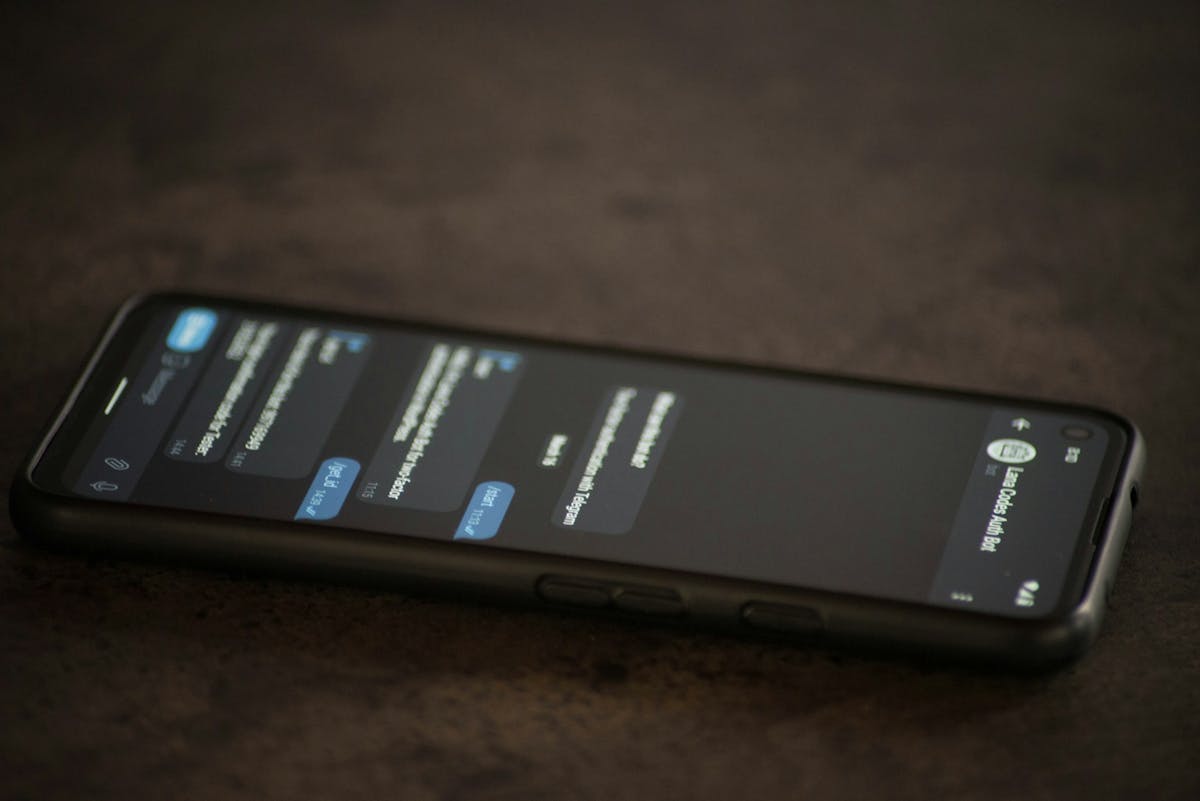Mass Notification Systems: A Complete Guide for Non-Desk Workforce Communication


Mass notification systems are indispensable for industries whose workforce operates away from traditional desks. Employers in industrial settings, they handle emergency communications and time-sensitive updates with reliability. SMS-based notifications ensure immediate dissemination of crucial information, even without internet connectivity. In this guide, we’ll explore how these communication tools support safety, efficiency, and overall operational continuity for non-desk workers.
A Quick Overview of Mass Notification Systems
Mass notification systems (MNS) are robust communication solutions that quickly deliver urgent information to teams that do not work behind a desk, acting as a vital link for emergency messaging and operational continuity for workers who aren't bound to traditional office settings.
Definition and Core Purpose
At their core, mass notification systems enable organizations to broadcast urgent messages, safety alerts, and important updates across multiple channels simultaneously. For non-desk workers in manufacturing plants, construction sites, or field services, these systems are particularly vital as they may not have immediate access to traditional communication methods like email or internal messaging platforms.
These updates can include critical information such as shift changes, policy updates, and employee benefits communication. The primary purpose of MNS extends beyond simple message delivery. These systems are designed to ensure that critical communications reach everyone who needs to receive them, regardless of their location or the nature of their work, as outlined by Utimaco.
Key Applications in Modern Workplaces
In manufacturing environments, mass notification systems prove invaluable for alerting workers about immediate dangers like hazardous material spills or equipment malfunctions. For instance, when a critical machine malfunction occurs, MNS can instantly alert all floor workers, maintenance teams, and supervisors, enabling rapid response and minimizing potential risks.
Construction sites represent another crucial application area. Workers often spread across large sites can receive immediate alerts about weather conditions, safety hazards, or emergency evacuations through multiple channels—from text messages to on-site loudspeakers. A multi-channel approach ensures that critical information reaches workers regardless of environmental noise or their location on site.
The impact of these systems is significant and measurable. Such an improvement in response time can be crucial in situations where every second counts.
For non-desk workforce communication, mass notification systems have become indispensable tools that bridge the gap between safety protocols and their practical implementation. They ensure that every worker, regardless of their location or role, remains connected through effective employee communication to critical information that affects their safety and productivity.
Key Features of Mass Notification Systems
A robust mass notification system (MNS) is built on several critical features that make it effective for non-desk workforce communication, ensuring timely, reliable information across diverse work environments.
Reliability and Redundancy
In emergency situations, message delivery failure isn't an option. Modern mass notification systems employ multiple communication channels simultaneously to ensure message delivery. For instance, in a manufacturing facility facing a chemical spill, the system can simultaneously send SMS alerts to workers on the floor while broadcasting messages over loudspeakers and sending emails to management. This redundancy ensures that even if one channel fails, critical information still reaches its intended recipients.
Mobile and SMS Capabilities
For non-desk workers who may not have immediate access to computers or desk phones, mobile functionality is crucial. Understanding how to text an employee effectively is essential, as these features deliver immediate alerts directly to employees' mobile devices, regardless of their location within a facility or in the field. The system can send targeted notifications for various situations:
- Emergency alerts and evacuation notices
- Shift changes and scheduling updates
- Safety protocol reminders
- Operational status updates
- Company announcements
Automated Alerts and Scheduling
Automation capabilities significantly improve response times and reduce the manual burden on staff. The system can:
- Pre-set messages for specific scenarios
- Schedule notifications based on work shifts
- Trigger automatic alerts based on predefined conditions
- Send content-triggered notifications for policy updates or operational changes
For example, in healthcare settings, automated systems can instantly notify all relevant staff about emergency drills or actual emergencies, ensuring swift response times without requiring manual intervention.
Integration Options
The ability to integrate with HRIS systems and payroll.
For example, seamless integration with HRIS systems enables accurate and automated communication with employees based on their roles, departments, or locations. This ensures that critical messages reach the right individuals without manual intervention.
The system also provides essential feedback mechanisms through features like read receipts and response tracking, allowing administrators to verify that important messages have been received and acknowledged. This is especially valuable in workplaces where confirmation of message delivery is crucial for compliance, safety, or operational continuity.
For non-desk environments, these features ensure that all employees stay informed, regardless of their location or primary language. By leveraging multiple communication channels and integrating directly with HRIS and payroll systems, the platform streamlines workplace communication while ensuring no employee is left out of the loop.
Addressing Language Barriers with Mass Notification Systems
In today's diverse workplace, effective communication across language barriers is crucial, especially for non-desk workers, and modern mass notification systems address these challenges with sophisticated features that ensure clear, accessible communication regardless of language preferences.
Automatic Language Translation Features
Modern mass notification systems leverage advanced machine learning and natural language processing to provide real-time translation capabilities. For instance, Everbridge's platform automatically translates alerts into recipients' preferred languages, ensuring that critical messages are immediately understood by all employees. This feature is particularly valuable in manufacturing or construction environments where safety announcements must be comprehended quickly and accurately.
When workers receive communications in their native language, they're more likely to engage with and respond appropriately to notifications. This is especially important during emergencies when quick comprehension can make a significant difference in response times and safety outcomes.
Multichannel Communication Delivery
The effectiveness of multilingual communication relies heavily on reaching employees through their preferred channels. Mass notification systems utilize various communication methods, including SMS text messages for immediate alerts, mobile apps for detailed instructions, email for comprehensive information, and social media for broad announcements.
Understanding the advantages of different communication methods, such as texting vs email, helps organizations choose the most effective channels for reaching their non-desk employees. This multichannel approach is particularly beneficial for non-desk workers who may not have constant access to traditional communication methods.
For example, Yourco enables organizations to reach field workers through SMS notifications, ensuring that language-appropriate messages reach employees regardless of their location or primary communication method.
Customizable Messaging for Diverse Audiences
Beyond simple translation, effective communication requires cultural sensitivity and context. Modern notification systems also allow organizations to customize not just the language, but also the tone and content of messages for different employee groups. This customization ensures that communications resonate with diverse audiences while maintaining cultural appropriateness.
For instance, a manufacturing facility might need to communicate safety protocols differently to teams from various cultural backgrounds. The ability to tailor messages helps ensure that important information is not just translated, but properly contextualized for each group.
According to Forbes Insights research, language barriers significantly impact business operations in large organizations, particularly those with revenues exceeding $500 million. Furthermore, studies show that 65% of companies report that language barriers contribute to workplace ineffectiveness and poor collaboration. Mass notification systems help address these challenges by providing comprehensive language support that bridges communication gaps.
That approach is particularly crucial in industries with high proportions of non-desk workers, where clear, immediate communication can impact both safety and operational efficiency.
Benefits of Overcoming Language Barriers

When organizations implement mass notification systems that effectively address language barriers, they see measurable improvements in multiple areas of operations, making these systems crucial for modern workplaces.
Enhanced Safety and Emergency Response
The impact of multilingual communication on safety is significant and measurable. According to the National Institute of Standards and Technology (NIST), communities using multilingual emergency alerts achieve a 30% higher compliance rate during evacuations compared to those using single-language notifications.
This effectiveness was demonstrated during Hurricane Harvey in 2017, when Houston implemented a multilingual alert system providing information in Spanish, Vietnamese, and Mandarin. The system significantly improved evacuation coordination and response rates among diverse communities.
Research from the University of Miami found that bilingual individuals respond more rapidly to commands or alerts in their first language when under stress, making multilingual notifications crucial for emergency response.
Improved Employee Engagement and Inclusivity
By employing effective communication strategies, organizations can increase employee engagement and inclusivity. One multinational corporation reported a 25% increase in employee engagement scores within a year of implementing a multilingual mass notification system. Such gains extend beyond simple metrics, as effective strategies to engage non-desk workers can also lead to operational improvements.
A manufacturing facility that introduced a bilingual notification system observed a notable decrease in workplace accidents and misunderstandings. Employees felt more confident reporting safety concerns and participating in training sessions when they could communicate in their preferred language.
Increased Operational Efficiency
The operational benefits of overcoming language barriers are substantial and quantifiable. The Society for Human Resource Management (SHRM) found that organizations implementing multilingual communication strategies experienced a 20% reduction in operational errors.
A real-world example comes from a logistics company that implemented a multilingual notification system for communicating shipping updates and safety protocols. The result was a 15% increase in on-time deliveries, demonstrating how clear communication directly impacts operational performance.
Such improvements in efficiency stem from:
- Reduced misunderstandings in daily operations
- Faster response times to operational changes
- More accurate execution of procedures
- Better coordination among diverse teams
By eliminating language barriers, companies create an environment where all employees can understand, respond to, and participate in crucial workplace communications. This comprehensive approach to communication not only enhances safety and efficiency but also builds a more cohesive and productive workplace culture.
Implementing a Mass Notification System Successfully
Successfully implementing a mass notification system requires careful planning, thorough preparation, and ongoing maintenance, and this guide will ensure your implementation delivers the intended results.
Assessing Organizational Needs
Begin with a thorough assessment of your organization's communication requirements. Utilize survey distribution platforms and conduct focus groups to understand your workforce's communication preferences and challenges, and analyze employee survey results to identify key areas for improvement. Pay special attention to:
- Current communication bottlenecks and gaps
- Language preferences across different departments
- Existing systems that need integration
- Specific emergency communication requirements
Selecting the Right System
Choose a system that aligns with your organizational needs and can scale with your growth. Key features to evaluate include:
- Multi-channel delivery capabilities (SMS, email, desktop alerts)
- Integration capabilities with existing HR and security systems
- Language support and translation features
- User-friendly interface for both administrators and end-users
- Robust reporting and analytics tools
Scalability and ease of use are crucial factors when selecting a system, especially for handling high-stress situations.
Implementation and Training
Develop a comprehensive training program that ensures all users can effectively utilize the system and helps you prepare to onboard employees. Acknowledging that onboarding in different industries may present unique challenges is essential. Include:
- Hands-on workshops for system administrators
- Department-specific training sessions
- Video tutorials and documentation for self-paced learning
- Regular refresher courses to maintain proficiency
Create a dedicated support system to help users during the transition period. This might include:
- An internal help desk
- Quick reference guides
- Designated system champions in each department
- 24/7 vendor support access
Maintaining and Optimizing the System
Regular maintenance ensures your system remains effective and reliable. Implement these ongoing practices:
- Schedule regular system tests and updates
- Collect and analyze user feedback, and take action on survey results
- Monitor system performance metrics
- Update contact information and user groups regularly
- Review and update emergency protocols
Implementing scheduling features to ensure notifications reach recipients during appropriate hours, considering weekends, holidays, and vacations, is recommended.
To ensure long-term success, establish clear communication protocols and guidelines for system usage. Define:
- Roles and responsibilities for system administrators
- Criteria for different types of notifications
- Message templates for common scenarios
- Escalation procedures for emergency situations
Remember that successful implementation is an ongoing process. Such commitment to continuous improvement will help maximize the system's effectiveness and ensure it remains a valuable communication tool for your organization.
Strengthen Your Non-Desk Workforce Communication with Yourco
Effective mass notification is all about serving the people who keep your operations running—those who are on their feet, operating machinery, or on job sites dispersed across a region. Yourco’s SMS-based solution is designed specifically for these workers, ensuring that every individual receives important updates, safety announcements, and operational directives without hassle. By eliminating the need for complex apps or extensive tech knowledge, Yourco delivers fast, reliable, and straightforward communication that your on-the-move teams can trust.
Whether you’re alerting crews about urgent safety issues, sending out wages and shift-related updates, or managing critical incidents, Yourco provides a powerful and intuitive platform to get messages where they need to go—instantly. With built-in translation tools, easy, scalable broadcast options, and a user-friendly interface, Yourco helps you streamline daily communications and reinforce a culture of safety and efficiency. There’s no better way to keep your workforce connected when—and where—it matters most. Let Yourco bridge the gap in communication for your non-desk workforce and elevate your operational success from the ground up.
Try Yourco for free today or schedule a demo and see the difference the right workplace communication solution can make in your company.


